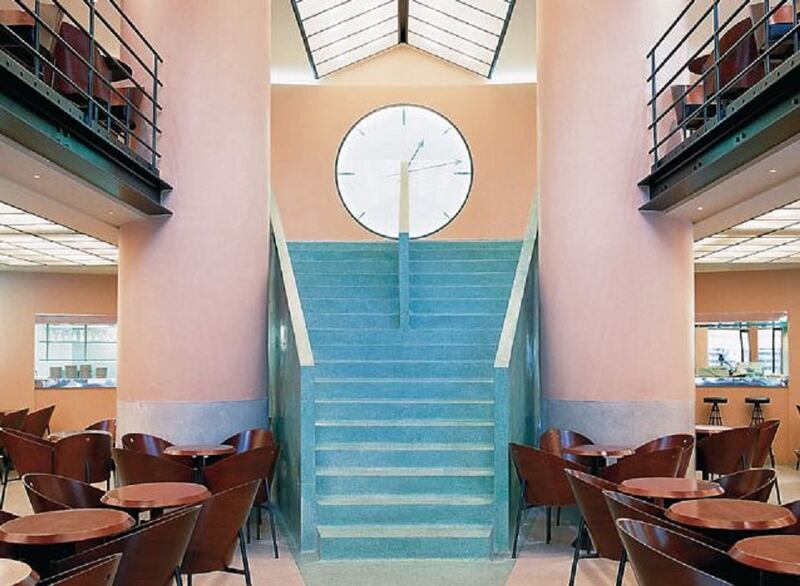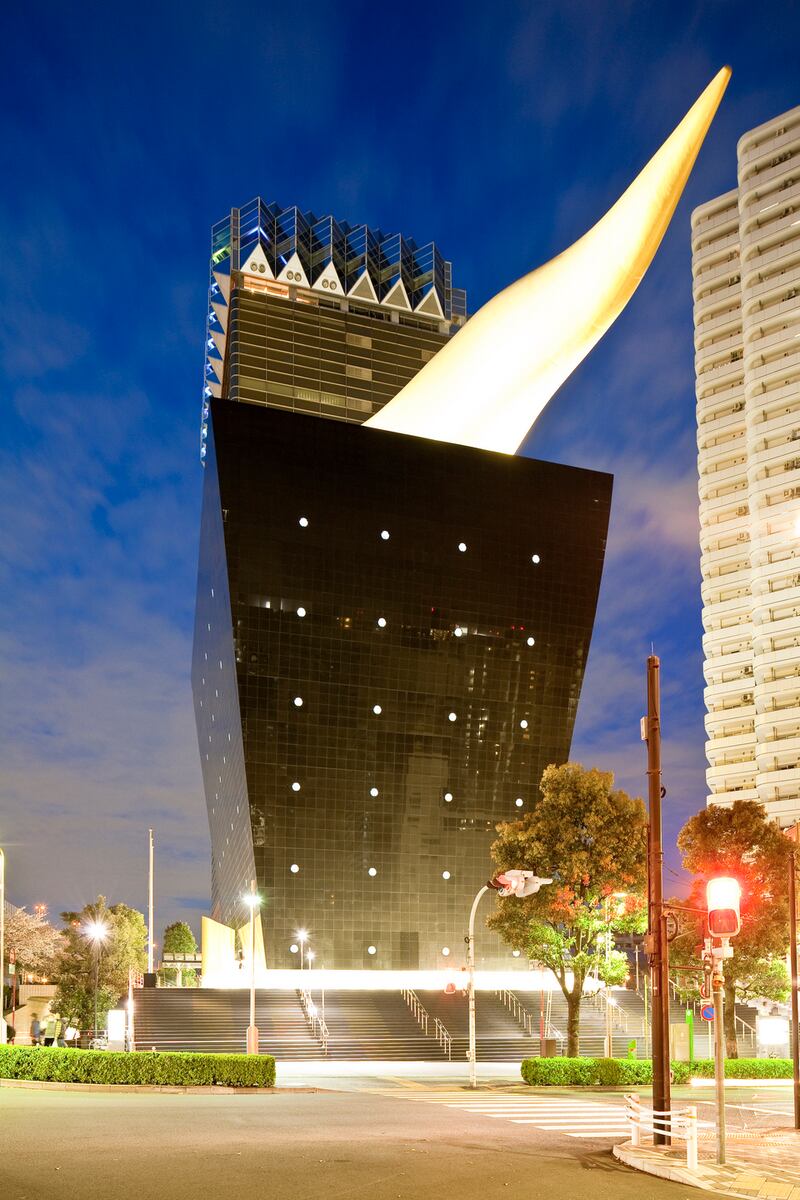In Dublin to launch his new range of perfumes, Philippe Starck has the assembled beauty journalists in the palm of his hand – or rather in a gloriously evocative sepia-toned world where Amelie lives around the corner and Chocolat is across the street.
His mother, the world famous French designer explains, had a perfume shop in an out-of-the-way part of Paris. His parents had divorced (his father was an aeronautical engineer) and to give her a job her parents bought her the shop.
“It was a huge mistake, my mother was so, so sexy, she had a lot of success with men. She preferred to spend time with guys everywhere.”
Meanwhile eight-year-old Philippe used to climb to the top shelf in the storeroom “like a monkey” – he does the clambering movements, it’s very charming and funny – while listening to the classical music records his mother had bought him as he waited for the tinkling of the bell to announce the next customer.
It’s where he says he learned his love of perfume – “how the only way to survive is to dream, to find my territory”. Music he says makes you feel secure and for perfume it is exactly the same.
His stunning wife Jasmine, who travels everywhere with him, sits close recording everything, smiling encouragingly, supplying a word when his near-perfect English falters.

She slips him a piece of paper with the names of the three perfumers who created the formulations, a gentle reminder from the woman who used to work in publicity at LVMH, the largest luxury goods company in the world, that this dreamy talk is fine but the business of the day is the perfume.
He had he says been asked many times “by all the big companies” to make a perfume.
“They want to put my name on it. Philippe Starck. I am not a business man I don’t want to make a product.”
In his brief to the perfumers he never mentioned ingredients; there was no talk of citrus bases or woody overtones, it was a feeling, he says, a dream, he wanted to capture.

Two types
“When I open a magazine, I see other women; there are two types, a two-dimensional sort of bimbo who speaks of only stupid things and I think of the women I know in my life who are incredibly intelligent, I want to make perfume for the women I know and not the women I see”.
And such is the 68-year-old’s charisma (if he could bottle that…) that after 40 minutes of his gentle storytelling, eyes twinkling, a smile playing on his lips, creating this world of an artisan dreamer who lives simply in “a cabin the size of this room” with Jasmine and their five-year-old daughter, it’s all anyone can do not to demand to be spritzed vigorously with the stuff.
To float off in a heady haze of one of his three fragrances, happily ignoring that brain niggle that reminds you perfume is a product – possibly the most value-added beauty commodity there is – his name is on it and Starck is a design genius, a globally recognised brand, the fabulously wealthy rock star of the design world who has designed everything from a toothbrush to a space rocket (for Virgin Galactic).
His instantly recognisable furniture is in museums everywhere. Currently he is designing housing in India, the interiors of chi chi hotels from Singapore to Miami, eyewear, suitcases and smartphones – the list is endless.
A reminder that he is also a yacht designer came last month when Russian billionaire Andrey Melnichenko’s boat – a €400million superyacht designed by Starck – was released by authorities in Gibraltar after it was seized over a claim about an unsettled shipbuilding bill.
And his name sells.
A survey of London property sales found that Philippe Starck sanitaryware adds 3 per cent to the price of a house. After more than 35 years working at a ferocious pace, cataloguing every single product he has designed would seem impossible, even he can’t put a number on it.

Completely mute
“That was terrific,” I say to him after the perfume presentation is over. “But I suppose you’re so used to presenting your ideas.”
He looks almost hurt.
“You know I designed a yacht for Steve Jobs? I remember I arrived with drawings and the model [of the $100 million yacht]. I opened up the suitcase and took the model out. Steve says, ‘It is beyond what I can ever imagine’. I never spoke, I never made a presentation, I don’t need to,” he says adding that they ironed out the details later.
“Usually I just show [my work] and they say ‘why did we not think of that before’. I never speak, I hate to speak, I am completely mute.”
He works, he says, 14 hours a day, every day, in one of his several homes – in Venice, on the banks of the Seine, in New York, Portugal, Spain – or in his private plane.
“Nobody produces ideas like me, it is abnormal. I make one project every day. I am so precise, I design very well, very fast”.
He goes into his office in Paris (“I do not like cities”) only once or twice a month, “my nightmare days”. He prefers to work alone, silently. Their daughter is his fifth child, he has four older children from previous relationships.
He speaks quietly, his face animated – he has arrived from Portugal for the presentation and will return there later before going into the office in Paris the next day. He is dressed in his usual uniform of grey – a hooded top under a suit jacket, grey jeans and black trainers. His thin metal glasses are reassuringly ordinary, almost bank manager – no angular architecy face furniture for him – and his luggage is a grey holdall of his own design.
And jostling with this justifiable and well-earned superyacht-sized ego is a curious humility, a melancholy thoughtfulness alongside his playful charm.
His work ethic, he says, is driven by his strict Catholic upbringing (he is long lapsed) a desire “to produce, to make something useful” – he defines good design as useful and that does not always mean functional.
“I am ashamed of everything I do. It is my engine to work – when I see the thing finished, I think I was lazy, I was dishonest, and I think perhaps next time it will be good.”

As self-criticism goes, it doesn’t get sharper.
“I know why I am quite famous, because I do it better than other designers and I do it better because I am ashamed of what I do and I try to do it seriously better the next time, with a higher level of thinking, with a higher philosophy, and at the end it is better.
“I am a better designer because I don’t like what I do, it is the best way. When you love what you do, you are in, when you don’t you are outside and you can critique, you can see the naked king.
“A designer at his best can try to help people to have a better life but if I disappear tomorrow, that will not change the people’s lives, ‘oh you know the guy? We have his beautiful lamp, it was a wedding gift’.”
He shrugs. “My job is not vital”
Philippe Starck’s three perfumes, Peau de Soie, Peau de Pierre and Peau d’Ailleurs are available exclusively in Brown Thomas
Café Costes
Where it all began: Starck first came to public attention when he was commissioned by French president Francois Mitterand to refurbish his private apartments in the Elysee Palace. That same year, 1984, he designed the interiors for Café Costes in Paris – his three-legged curved-wood chair quickly became a sought-after design and an era of “designer interiors” began.
Juicy Salif

The most beautiful, undeniably graceful and unusually leggy lemon squeezer. Made for Alessi it has become in its 25 years a classic piece of contemporary design. It doesn’t work very well – so it’s also a classic example of form over function – but who cares?
Ghost chair
Designed in 2002, in its first 10 years the transparent elegant seat with echoes of French furniture from Louis XVI’s court sold 1.5 million pieces making, it according to Kartell its manufacturer, the most widely purchased “original design” chair in the world. As an example of Starck’s work it is perfect – beautiful to look at, playful, and with its single injected polycarbonate mould, a technical challenge to manufacture.
Hotels
Opened in December 2016, Miami's SLS Brickell "just might be the hottest new destination in town" according to Architectural Digest. It is the latest in a long line of hotel interiors by Starck, beginning in the late 1980s when working for visionary hotelier Ian Schrager in New York his Royalton and Paramount hotels started the designer boutique hotel trend.
Asahi Brewery headquarters.
In Tokyo, a city not short of architectural landmarks, Starck’s 1989 design for the Asahi beer company stands out with its massive golden flame on the roof – the building is in the shape of a beer glass. Starck says while not a fan of cities, if pushed he’d nominate Tokyo as his favourite because “it’s very quiet and the people are so kind”.








